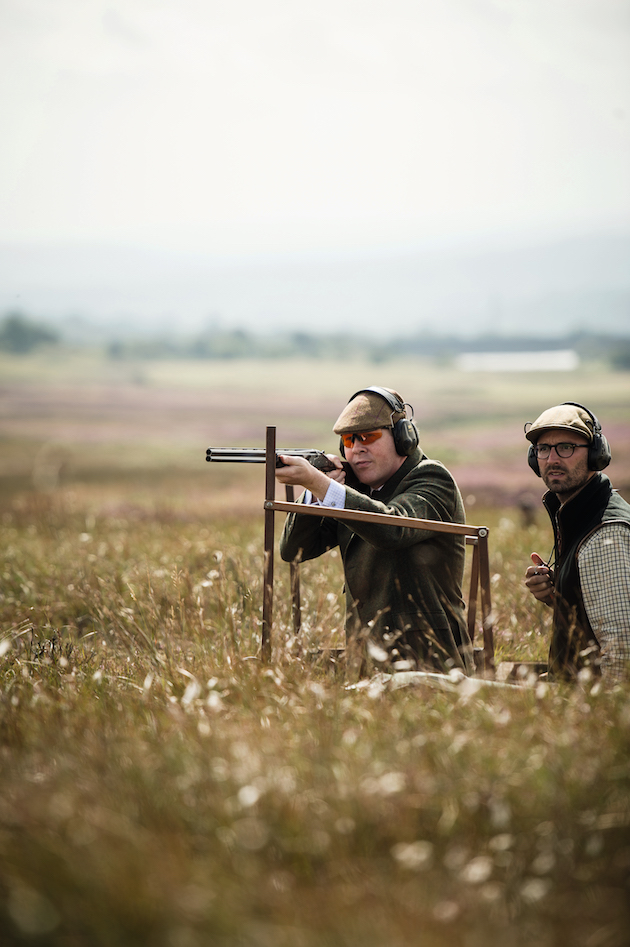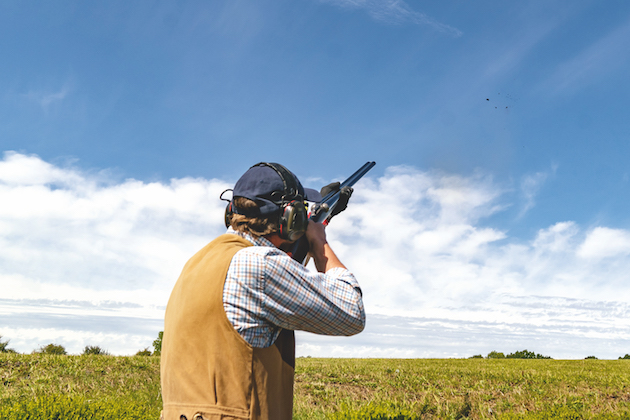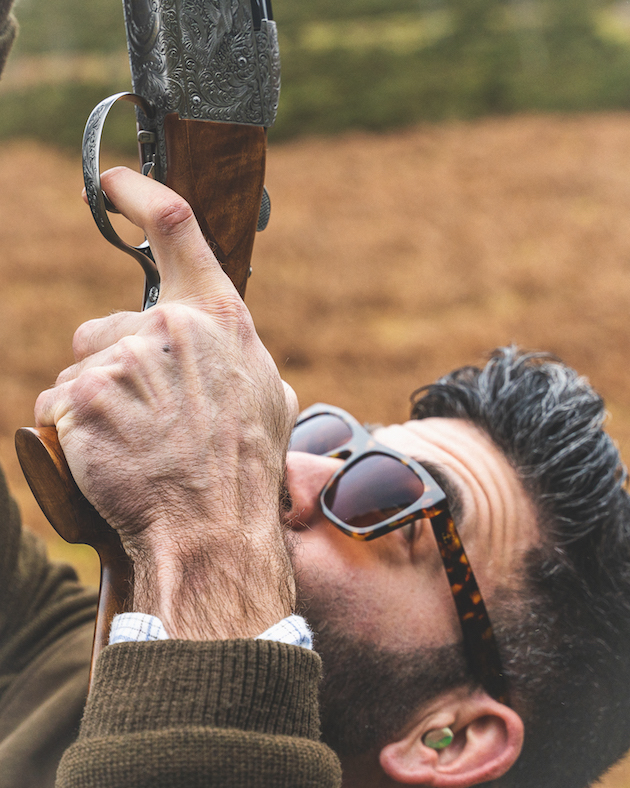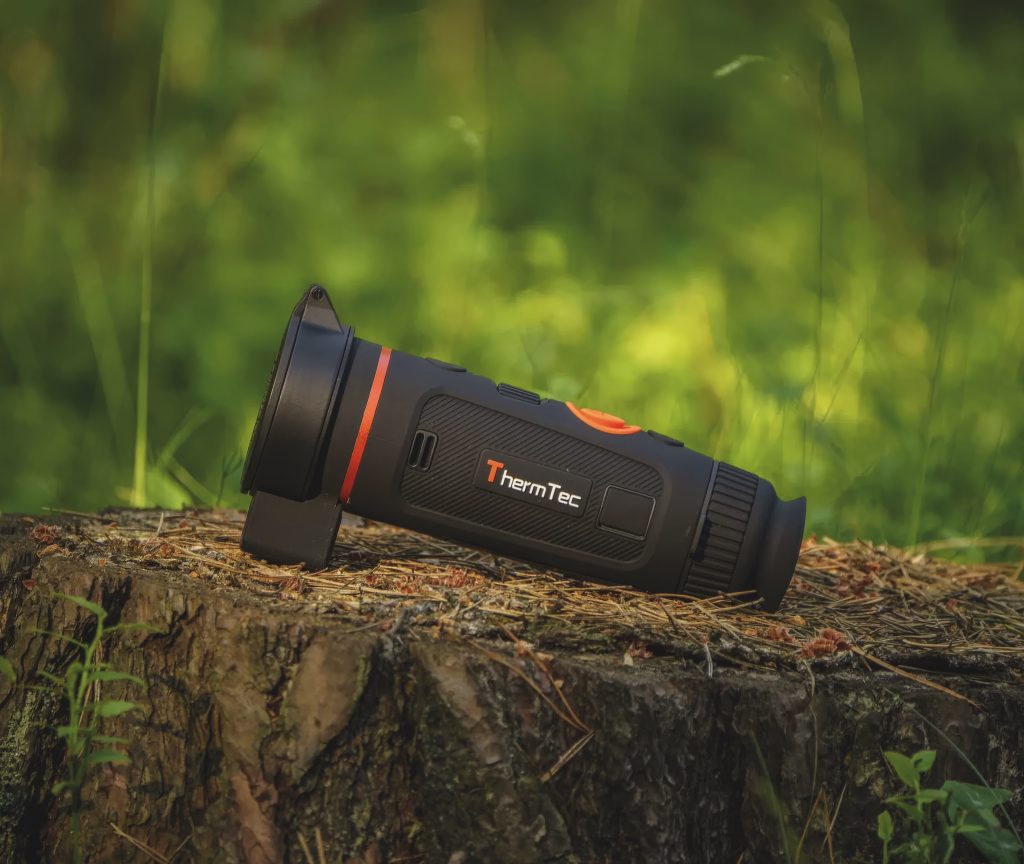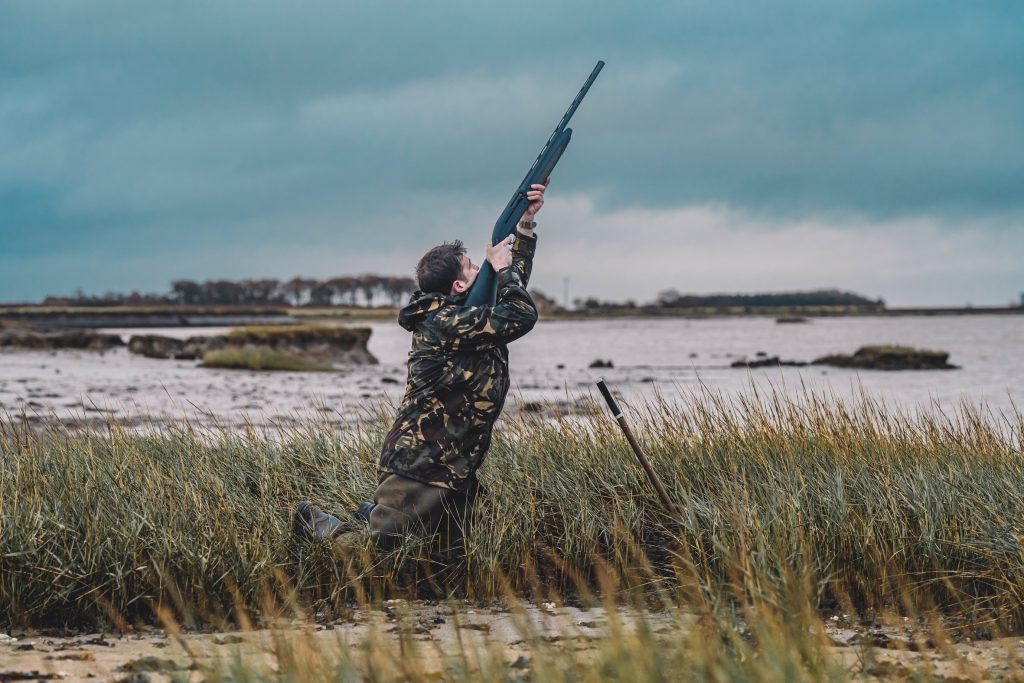Win CENS ProFlex DX5 earplugs worth £1,149 – enter here
Should you buy the best shooting glasses you can afford?
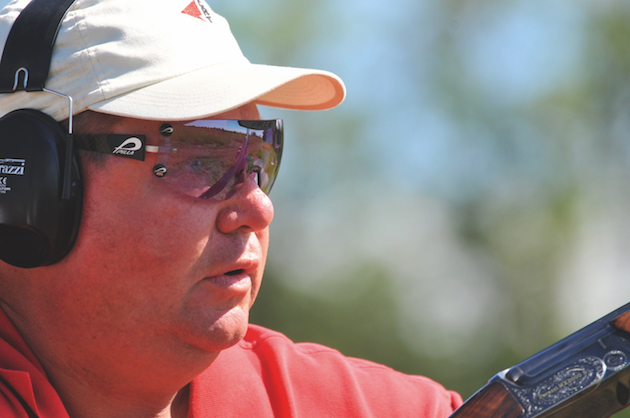 George Digweed
George Digweed
We all know the type: he usually shoots a Perazzi or a Krieghoff and unfailingly has a pair of those ludicrously expensive coloured shooting glasses on his head. Those of us who’ve been around long enough will note that such eyewear is a relatively new addition to the flash shooter’s wardrobe. In one way, their ubiquity has come about because ‘safety glasses’ are now mandatory on clay grounds.
Shooting glasses for safety
I can hear some of you scoffing but a shard of clay to the eye really leaves you missing many more birds than you already do. But a pair of those clear plastic numbers that used to be handed round in chemistry lessons before you fired up the Bunsen burners would perhaps serve the purpose. So why do people spend three days’ wages on purple Pilla jobs and could they improve your game shooting, or is this recent trend merely an example of competitive spending?
I spoke to Ed Lyons, widely regarded as the specialist vision consultant for shooting sports, for some insight into what represents sensible options for game shooters. The thinking, he explained, is that glasses can make a target — be it a clay or a snipe — stand out against a background. As we all know, the clearer the target, the more we focus on it and the better our shooting will be.
Colour
Glasses are now almost universally worn on grouse moors but one of the many choices grouse shooters face is what’s the best colour to pick out heather-coloured birds against a heather-covered hillside? I’ve always wondered if there were recommended colours for different situations — blue sky or overcast — or if it is purely personal preference.
Ed was able to offer some insight into the kaleidoscope of colours available. “When working with a client I aim to boost visual acuity (the level of high-contrast detail you can perceive and contrast sensitivity) vital for picking out heather-coloured birds from heather-covered hills. Generally speaking, a low-light pair such as a 90% transmission rose or yellow — or even totally clear — is a must. A full sun product can be very handy then a good all-rounder such as a circa 50% bronze, rose, orange or purple would be a well-balanced set.”
In other words, there’s quite a lot to it. With Ed’s words ringing in my ears, the idea that you might spend a few hundred quid and then buy four more lens colours at reasonable expense started to seem a bit more reasonable.
Some models can look a little like a fighter pilot’s visor and this puts many game shooters off but, needless to say, the all-round protection offered by such a big lens is clear. But is a £600 outlay really necessary? Ed explained that, as with all things, the cheaper options are tempting but they may not be the best route.
Last year, Ed Lyons teamed up with Ed Solomons, clay and game coach, and former world champion, to create Edwards Eyewear.
He found the process of designing glasses underlined that scrimping on lenses is a bad idea. They worked with Zeiss due to its exceptional pedigree in the sports eyewear industry.
Ed Lyons notes that while you could go for cheap glasses, most safety lenses have been made from polycarbonate, which is impact resistant, lightweight and inexpensive. The downside is that, optically, polycarbonate is not particularly impressive. The material can create distortions, which reduces the clarity of the lens. Vision and shooting are intrinsically linked and you can’t hit what you can’t see, meaning that scrimping on lens quality is a false economy.
In a further attempt to justify spending big money on eyewear, I spoke to Charlie Stewart-Wood, AA class clay Shot, game Shot and former director of Atkin Grant & Lang Shooting Ground. He noted with Pilla “you get the reassurance they are the best and will fully protect your eyes. They also give you flexibility in the UK’s changing weather conditions.” The ability to control the glare of a low winter sun is certainly an asset when game shooting.
Confidence in shooting
Another interesting point he raised was confidence: “For some clay Shots the reassurance of being able to change lenses gives them more confidence in their shooting.” This goes for game shooting too, be it woodcock or driven partridges.
Those who have to wear spectacles to shoot will be familiar with the fact that rain is an issue. There is little more irritating than the dreaded wipe and smear interfering with your vision. Thankfully, modern optics can help. Ed Lyons explained that the likes of Zeiss’s premium material, “a derivative of nylon is oil and water repellent to help reduce pooling on the lenses”.
He added that, as we get older, our eyes tend to become less efficient at focusing at different distances; the lenses within them begin to stiffen and the muscles that control them lose some of their capability. We are also more prone to developing age-related issues such as cataracts, glaucoma and age-related macular degeneration. While the more costly shooting glasses will not offer any solutions over their less expensive counterparts, good-quality optics will always perform better so will help ageing eyes to realise their full potential.
Prescription lenses for those who require them are available across a range of brands. Vision is one variable that we can control and optimise. If you need prescription glasses for driving or television, it does make sense to invest in a good-quality pair of prescription shooting glasses and there are many options across brands such as Pilla, Oakley and Ranger.
Costly error
Many of us have worn an ordinary pair of dark glasses as the need arises, but Ed believes this could be a costly error if the worst comes to the worst.
“You must always ensure that the lenses are impact resistant — regular plastic optical lenses simply will not do as they can shatter when struck with enough force from a piece of broken clay, a stray pellet or a steel ricochet,” he emphasised.
“Here I am speaking from experience, having had to prise a piece of shot from a client’s eye after he ill-advisedly went on a grouse moor wearing £7.99 sunglasses from the local petrol station. As I am light-sensitive, I tend to wear my darker lenses most of the time and love a polarised lens for very bright days. The myth about polarised lenses being detrimental to depth perception is just that,” he added.
“Everyone’s visual system and colour preferences are different so while all the above is useful, much like having a stock fitted, there is no substitute for one-to-one advice.”
If you want to get the best out of your eyes a trip to your local optician may not be enough. Many times Ed has had contact from shooters whose glasses are perfect in the “straight ahead” position but as soon as the gun is mounted, the vision goes haywire inducing eye dominance problems. He explained this is even more problematic for those who use varifocals as the periphery of the lens is less sharp.
“While we are now open again for in-practice assessments, the COVID situation necessitated some flexible thinking so my online consultations were set up to help clients that could not travel,” he said. “When selecting eyewear for shooting, you must take into account both aesthetic and practical factors such as face shape, gun mount and the position of the optical centres.”
Good shooting glasses are money well spent
I must admit that until very recently, I used to look at those blokes with their £600 glasses and find a moment of temptation was quashed by the hefty price tag. However, in speaking to those who really know, I’ve concluded that good shooting glasses really are money well spent.
I have also learned that one of the very worst things for vision is alcohol. Eyes have muscles and Ed Lyons reminds me that like muscle systems in the body, our eyes can be affected by stress, dehydration, fatigue, medication, hormone levels and even blood sugar. In other words, if you’re on the peg and you have an almighty hangover, your eyes will be far from at their best. There is no eyewear, no matter how expensive, that makes up for five pints the night before.
Related Articles
Get the latest news delivered direct to your door
Subscribe to Shooting Times & Country
Discover the ultimate companion for field sports enthusiasts with Shooting Times & Country Magazine, the UK’s leading weekly publication that has been at the forefront of shooting culture since 1882. Subscribers gain access to expert tips, comprehensive gear reviews, seasonal advice and a vibrant community of like-minded shooters.
Save on shop price when you subscribe with weekly issues featuring in-depth articles on gundog training, exclusive member offers and access to the digital back issue library. A Shooting Times & Country subscription is more than a magazine, don’t just read about the countryside; immerse yourself in its most authoritative and engaging publication.






